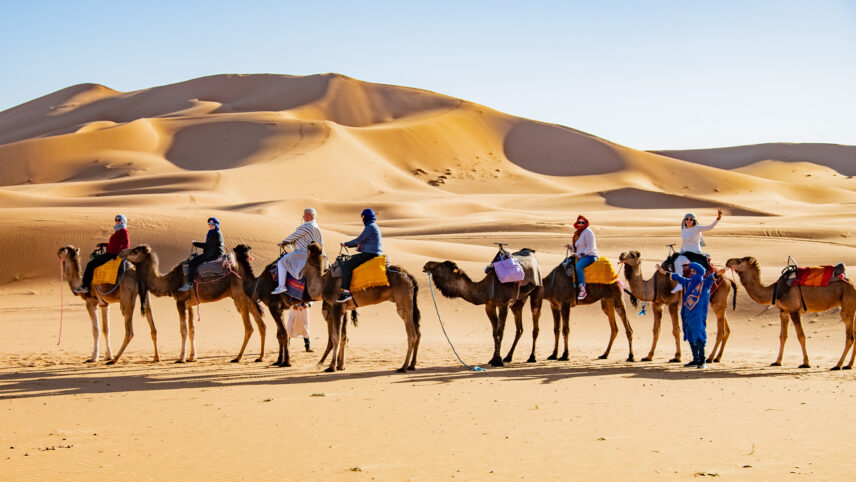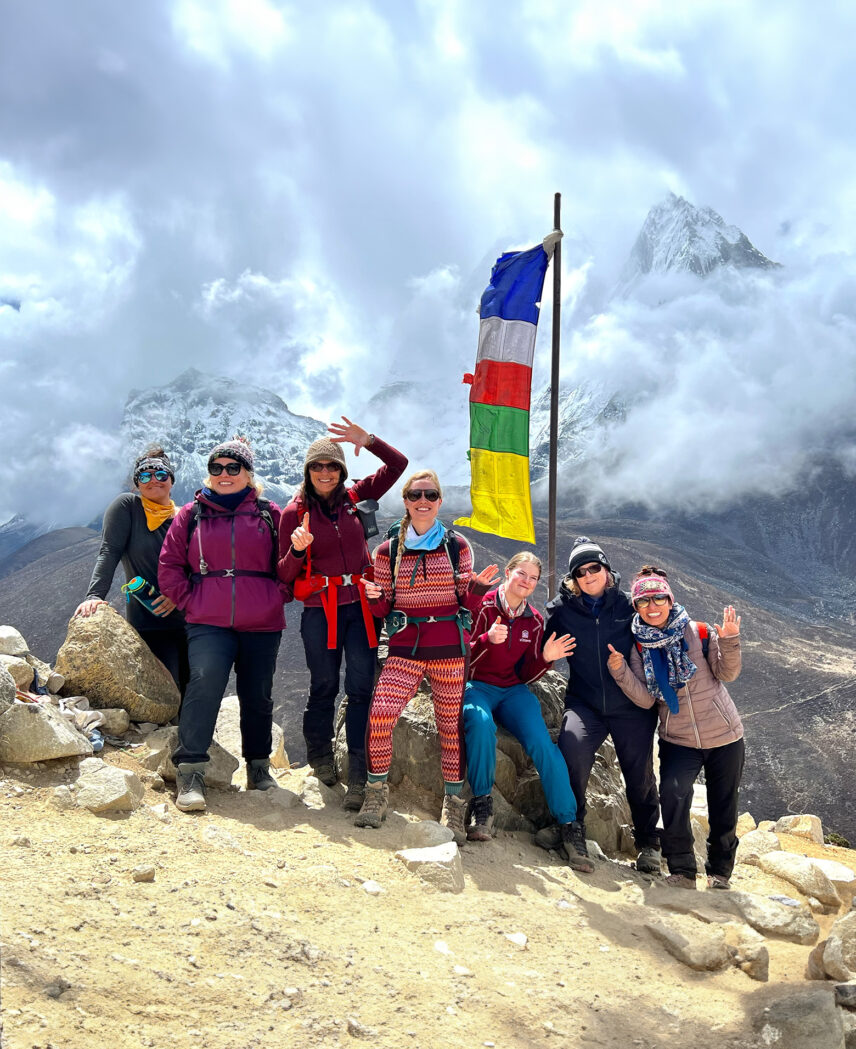Traveling in Morocco is like moving into another dimension, where all your senses are dialed up to a new level, and each place you visit is as incredible and iconic as the last.
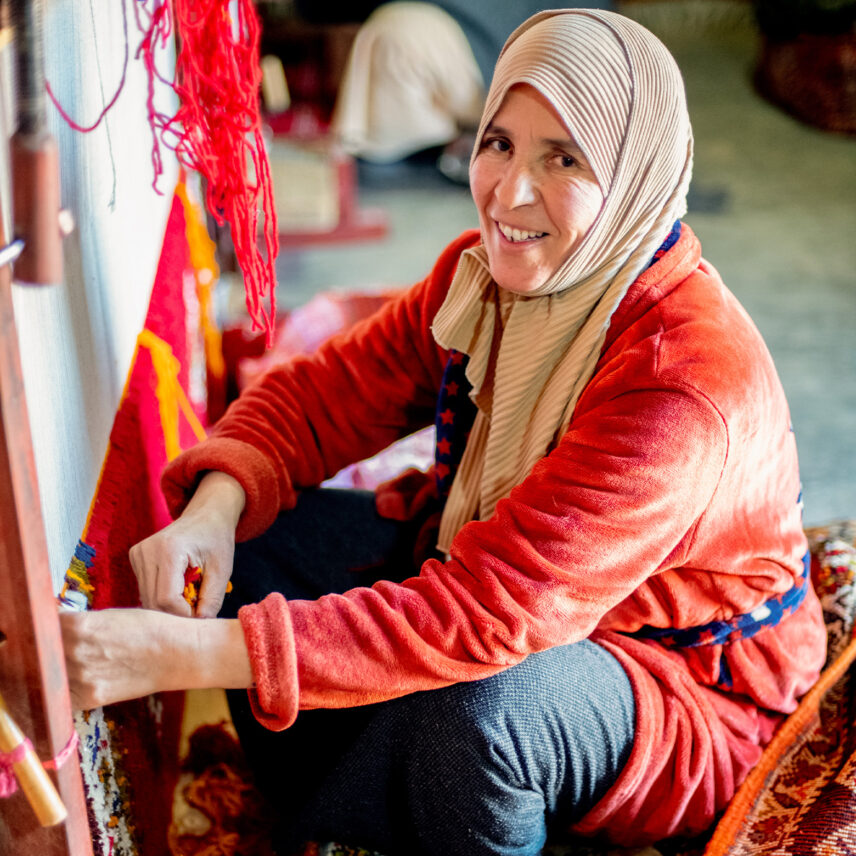
We start our journey by jumping headfirst into the culture. For our welcome dinner, we follow our guide, Miriam, through the winding streets of Marrakech to meet our host Zinab, who leads us through smaller twisting alleys, until we arrive at her home. We climb to the second floor and sit in a long narrow plastered room, with intricately tiled walls, low couches and a large round table in the middle. It’s early in the trip, and our group is just getting to know one another.
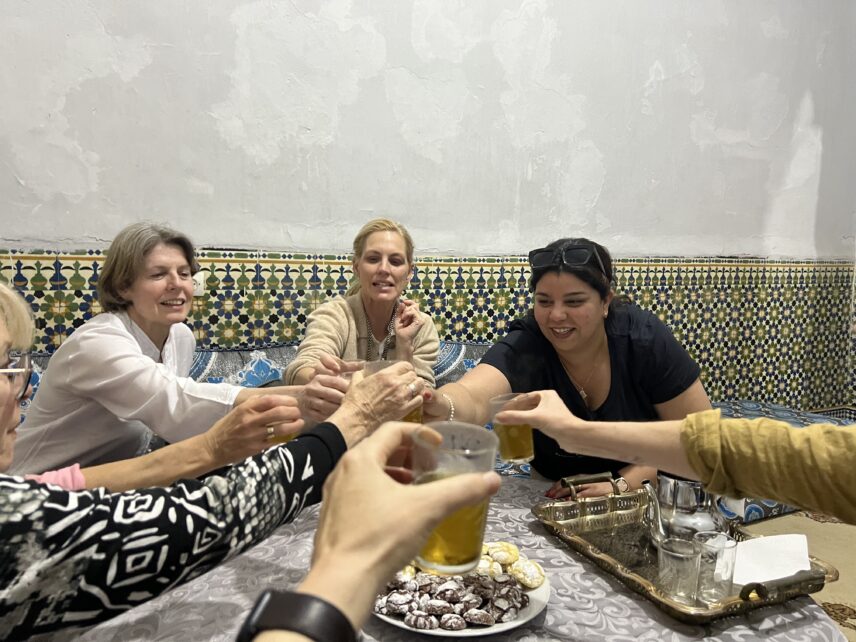
Having an intimate gathering like this, where we can chat amongst ourselves and get to know our host and guide in a casual setting creates an easy going vibe to the start of the trip. It’s here that we start to learn what life is like for women in Morocco, many of whom are still holding down the traditional household role of wife and mother. And we learn what it takes to make your own way in the world as a Moroccan woman.
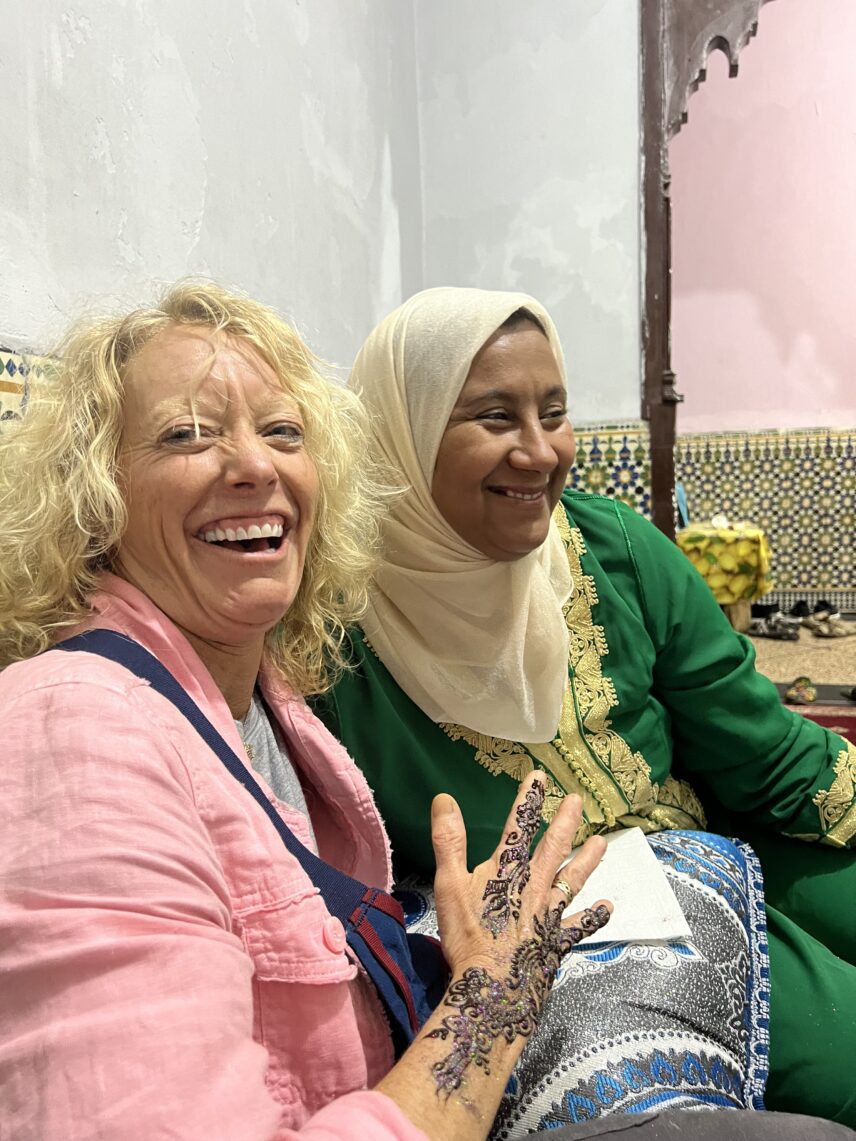
After our fill of Moroccan salads, lemon chicken, and fresh fruit, each of us has our hands painted with henna, before we head out into the evening and back to our Riad (hotel in a particular style with all the rooms facing an inner courtyard and no windows to the outside), where we tuck in for a cozy night’s sleep.
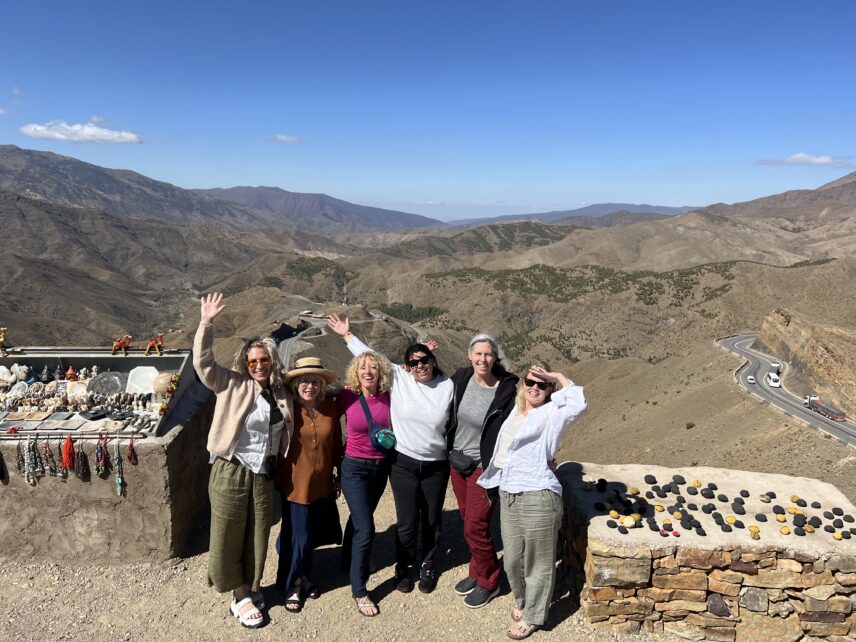
The next morning, we start our drive along the old caravan route. The buildings of the city give way to palm trees, then rocky striations as we head from the desert into the mountains. Miriam, on the van’s microphone, explains that this part of Morocco was once attached to the western United States, and I recognize the rock type and formations from drives through Arizona and New Mexico. Aside from Miriam occasionally sharing points of interest, the van is quiet as we take in the beauty around us (and recover from our jet lag).
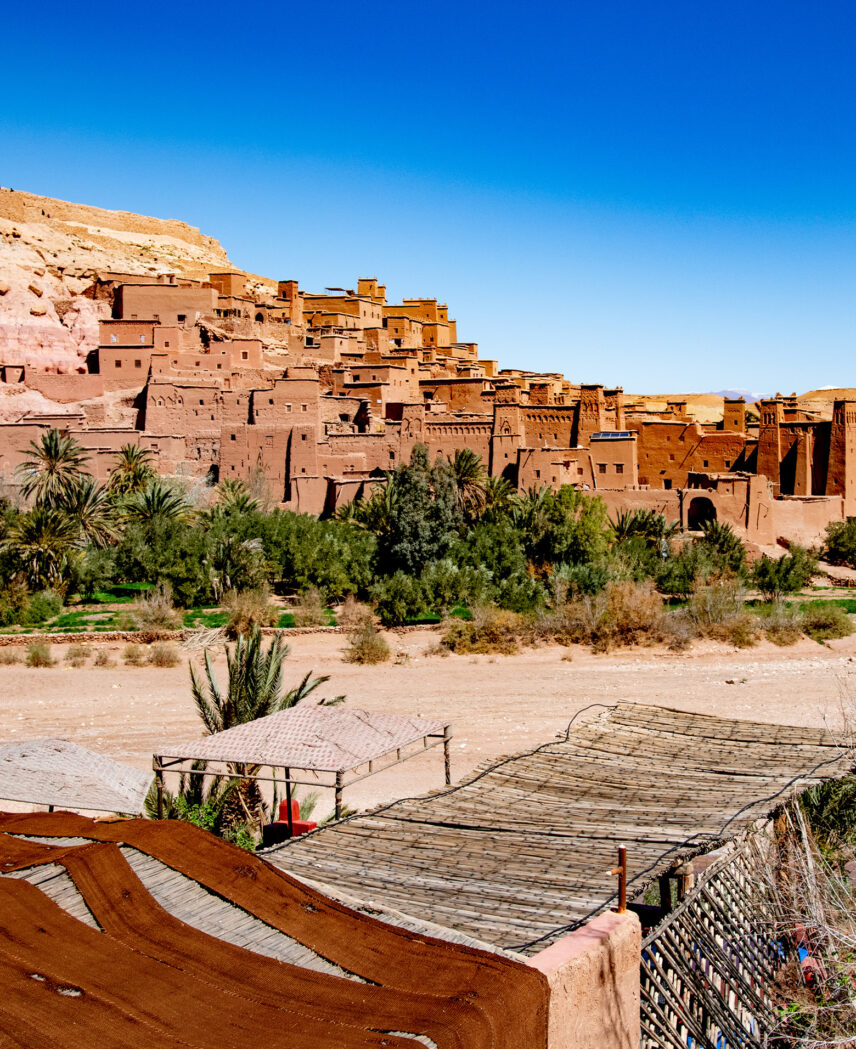
Our first stop on the caravan route is at Ait Ben Haddou, where we visit the incredible 11th century golden kasbah built into the cliffs, and the site of some popular Game of Thrones scenes. You can feel the whispers of ancient traders hawking their wares throughout the clay tunnels and cave-like shops, as this was the largest trading stopover throughout much of Morocco’s history. We watch the sunset from the top of the kasbah, and marvel at the stories contained in the crumbling clay bricks.
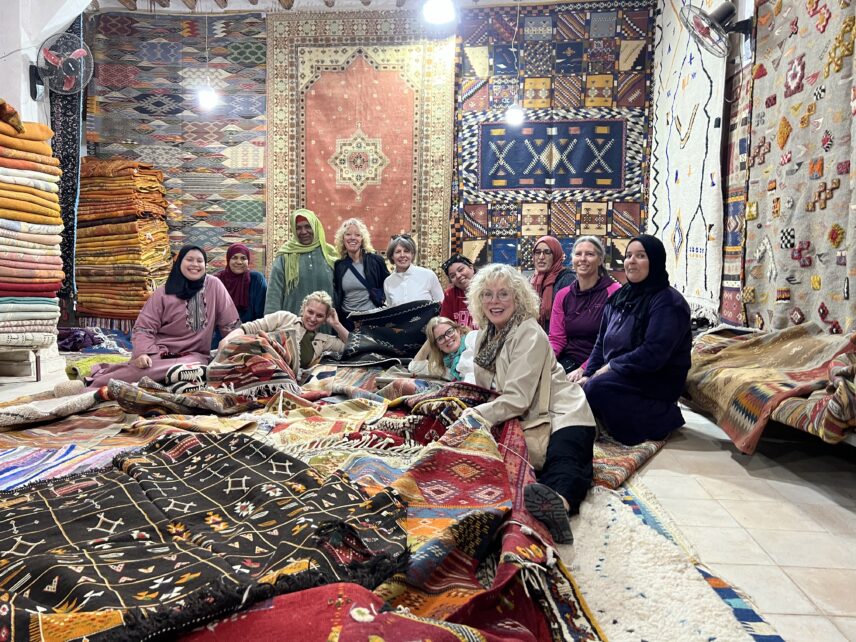
The next morning, we engage in a little trading ourselves as Miriam takes us to a women’s rug co-op by special request of the group. Two hours later, with 30 rugs purchased between six of us, packed to be shipped home, we’re back on the road, full of excitement about the gorgeous colorful handmade Amazigh rugs we’d purchased.
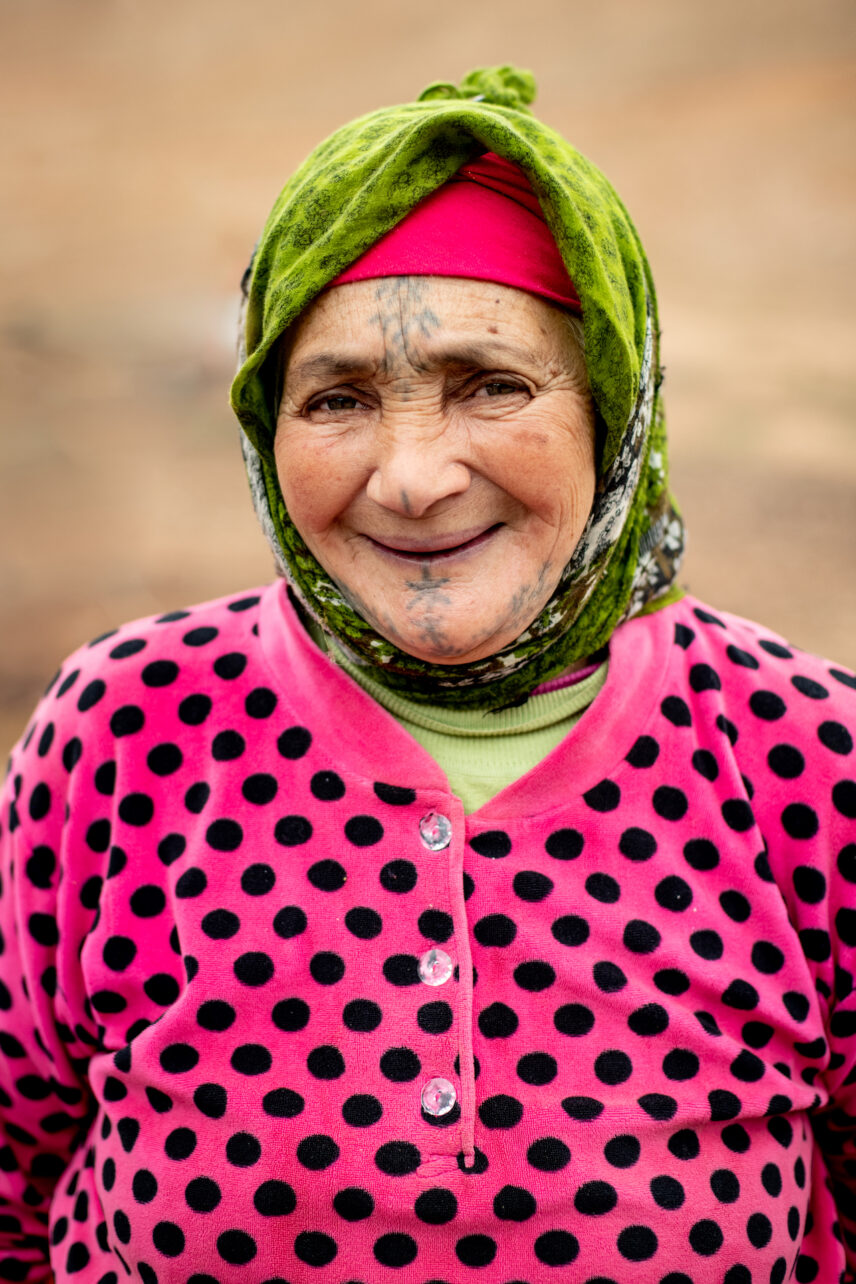
Miriam explains to us that, while we may have heard the indigenous people of Morocoo referred to as “Berbers,” the traditional and preferred name is Amazigh. The name “Berber” was assigned by the French, and is a variant of the word barbare, meaning barbarian. It’s no wonder that the local people prefer the term Amazigh, and from then on, we respectfully refer to the indigenous people of her proud country as Amazigh.
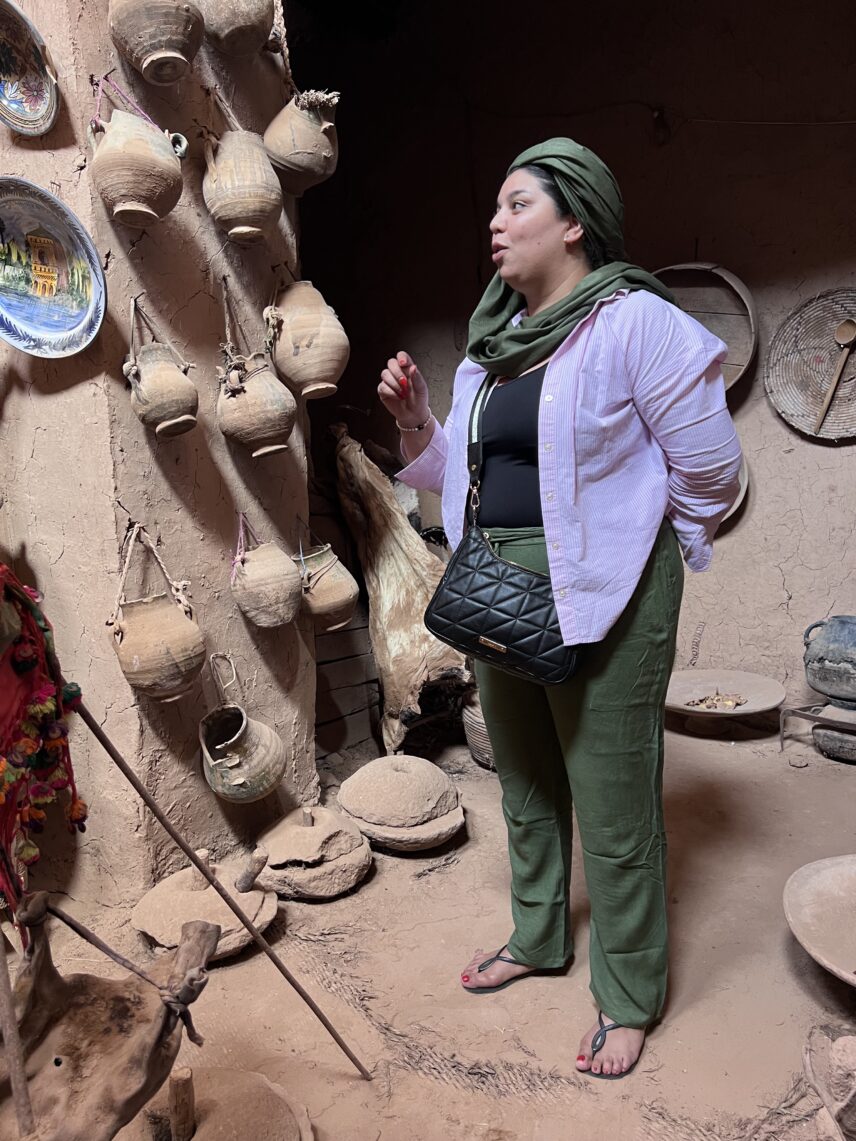
As the days progress, we get to know one another more deeply, and the chatter in the van increases. We share stories about kids, marriages, jobs, what we care about and other adventures we’ve taken. We learn more about Miriam, our fearless guide who left home at 19 to escape family expectations and oppression, and found her way to guide school in Marrakech, 45 minutes from small Amazigh village where she grew up (and where we made a quick pit stop to say hello to her mother!). She has created a life for herself, now working as a Wild Woman guide and sharing her love and knowledge of Morocco with us. She is a proud working woman, with an infectious laugh and deep care for her country and clients. But it wasn’t always easy for her, and the road ahead is also uncertain. Mariam confides that she thinks about getting married and having children, but that she would need to give up her job, and she’s not prepared to consider that option at the moment after working so hard for the life she loves.
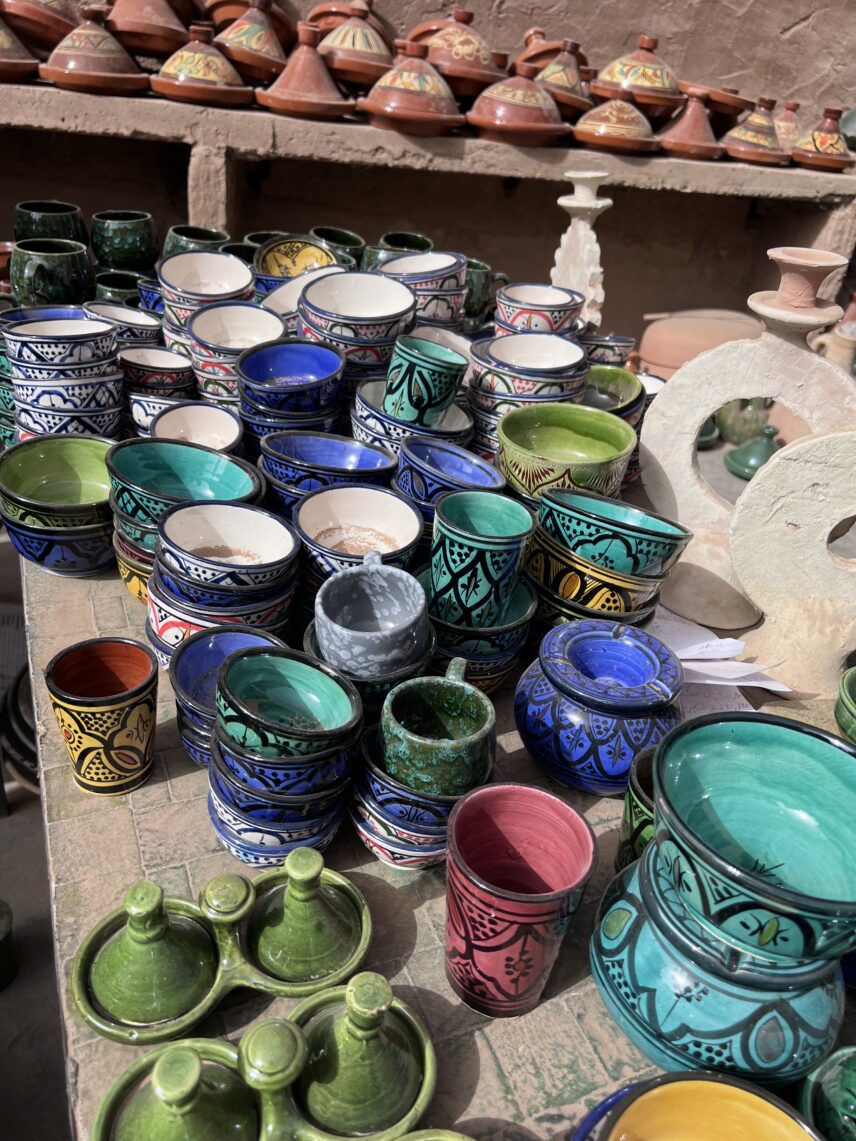
We stop in Tamegroute, an area well known for its green pigmented pottery. The pots are glazed with manganese, silicon and 1% copper which, together with the clay from the Draa River bed, creates a deep green color when fired. We take in the art of making the pots from the gathering of the clay and mixing by hand (and foot!), to turning, glazing, firing and then to the small store, where we are thrilled to support the local makers of this fine art, and further engage in the ancient practice of nomadic trading. As we pile ourselves and our purchases back into the van, we’re ready for our next adventure. We are heading to the desert!
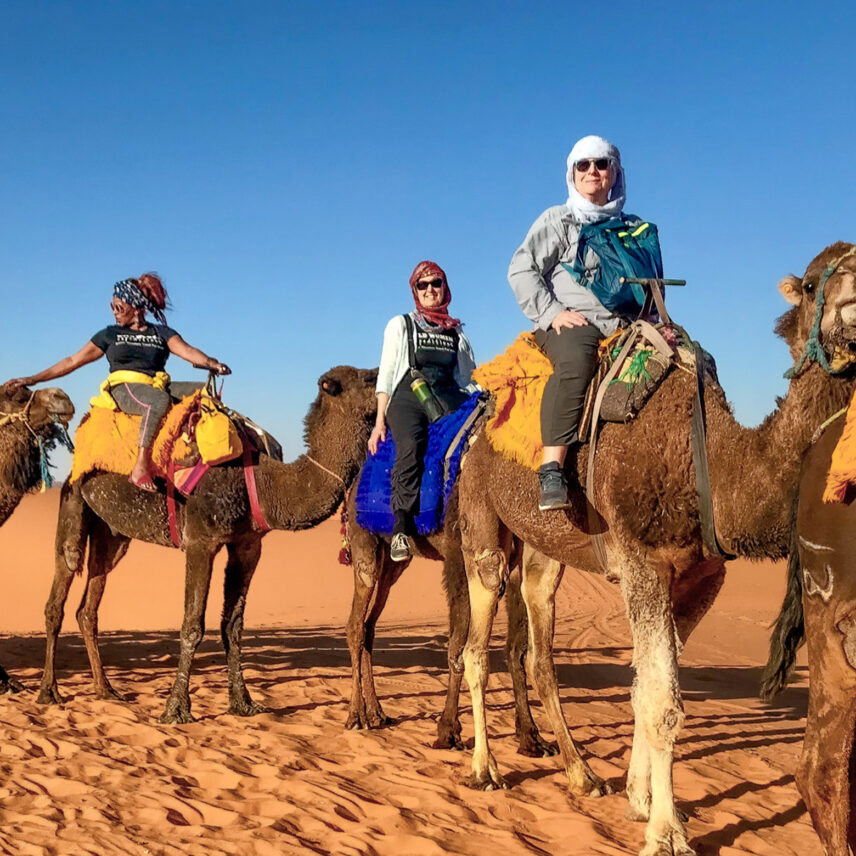
Before our camel ride and night in the desert, we stop to buy lengths of coloured fabric to make ourselves turban-like head scarves. The fabric can also cover our faces if the wind comes up and sand starts flying. Luckily, the weather is calm as we set out in 4×4’s to our desert camp, and we keep our scarves handy, practicing tying them as we drive, with some hilarious results. Two hours of driving over seemingly endless desert with few landmarks, brings us to our destination…a sand dune! We jump out of the vehicles as men in long white caftans arrive out of nowhere to transport our luggage, and we climb over the dune by foot to find ourselves at camp.
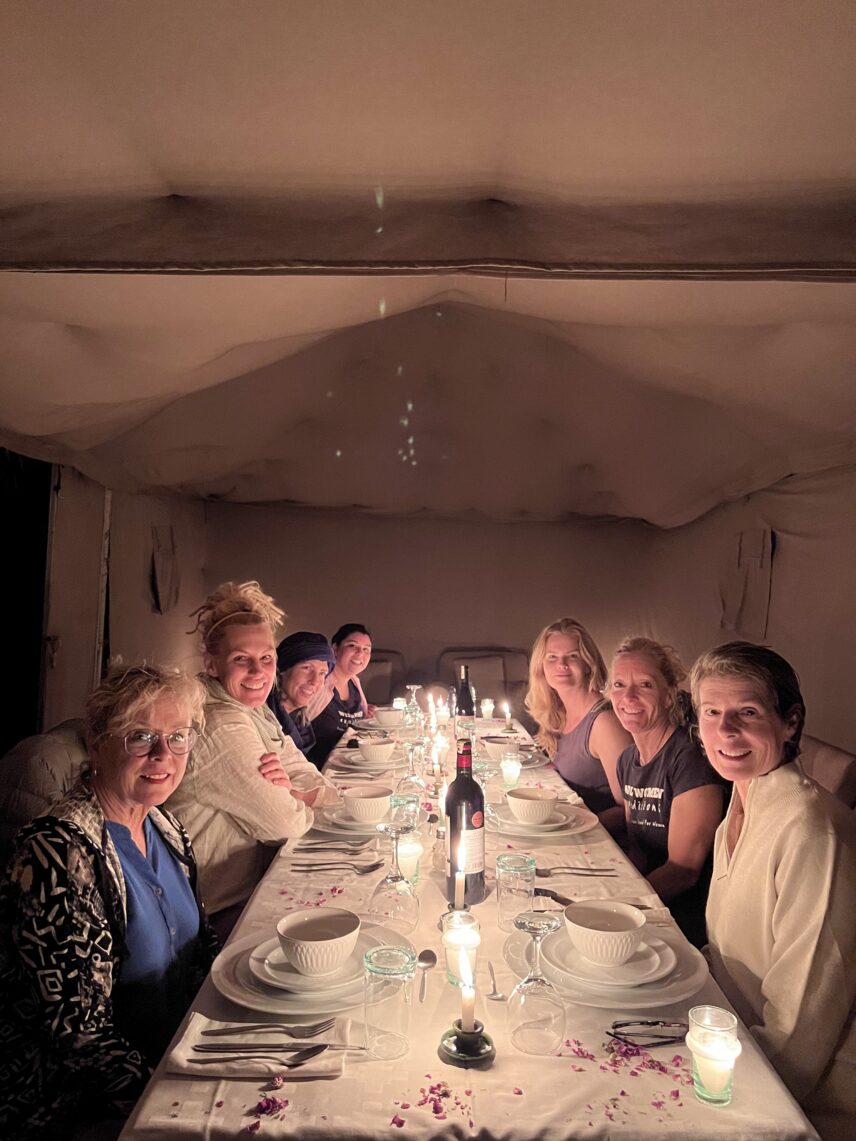
We are warmly welcomed to our luxury desert camp and offered cool wet cloths to freshen up with, and a cold glass of mint lemonade to quench our desert thirst. After a brief rest, it’s time to mount our camels and ride off into the sunset. We watch our shadows grow longer as we climb to the highest dunes, then dismount to go on foot to the top where we watch the sun sink over endless waves of sand. We’re awestruck and quiet as we lumber back to camp in the deepening dusk, arriving in time for a gourmet meal on a petal strewn table set with fine china in a palatial dining tent!
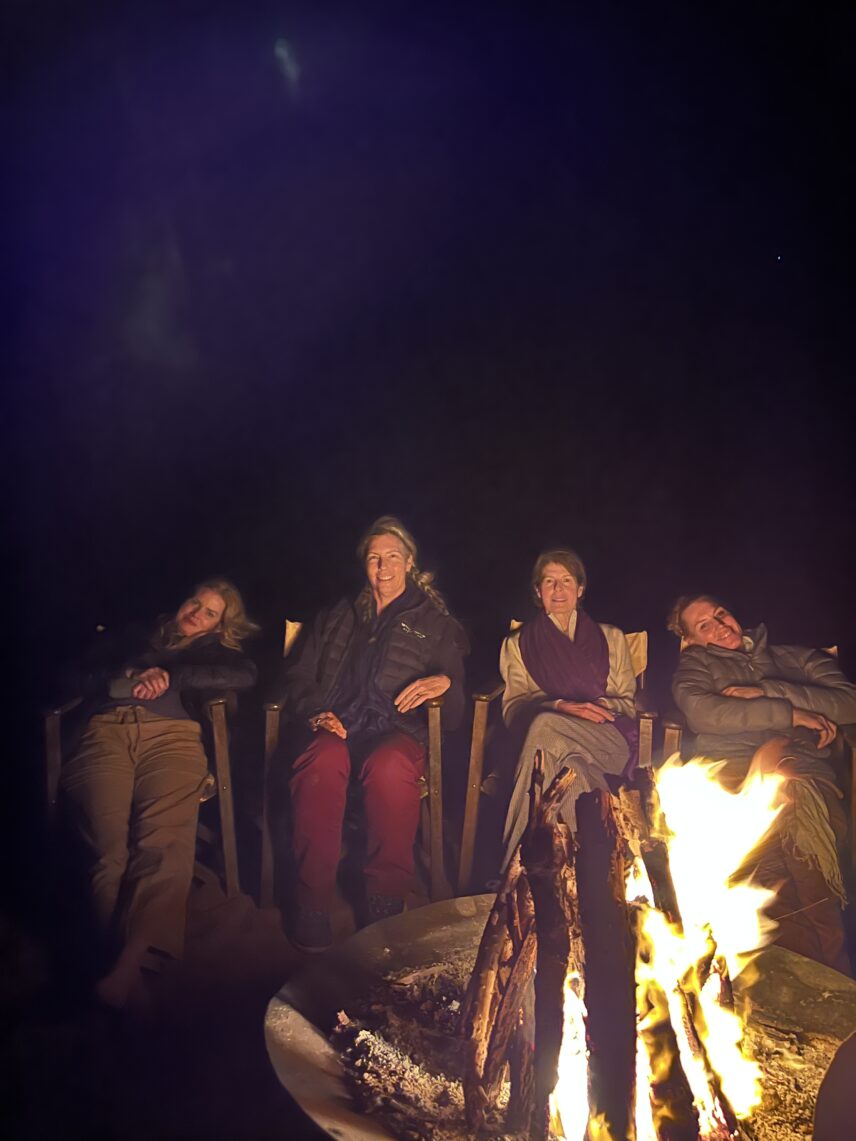
Later, with the quiet of the desert all around us, we sit by the fire and witness the depth of a night sky unhindered by light pollution. We can feel the group bond deepen as we share a bit more about ourselves under the infinite sky. Warming our hands by the fire, we laugh until we cry, and one particularly memorable story (what’s shared in the desert stays in the desert!) inspired our trip theme song: “Shine Bright Like a Diamond.”
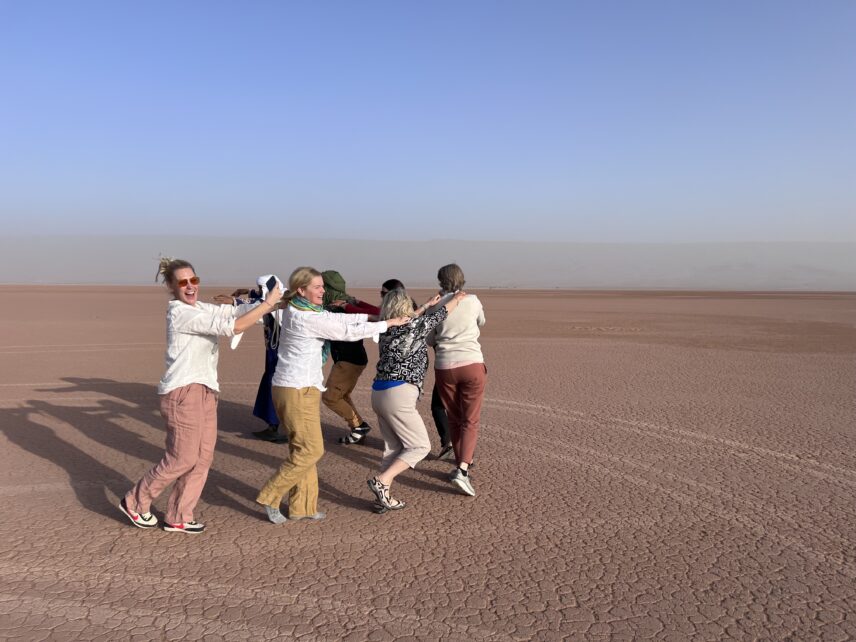
In the morning, it was with full hearts and wanting more that we said goodbye to our gracious Shahara desert hosts, getting back into the 4x4s, to begin making our way toward the High Atlas Mountains, stopping for an impromptu dance party and some fossil hunting before leaving the desert behind.
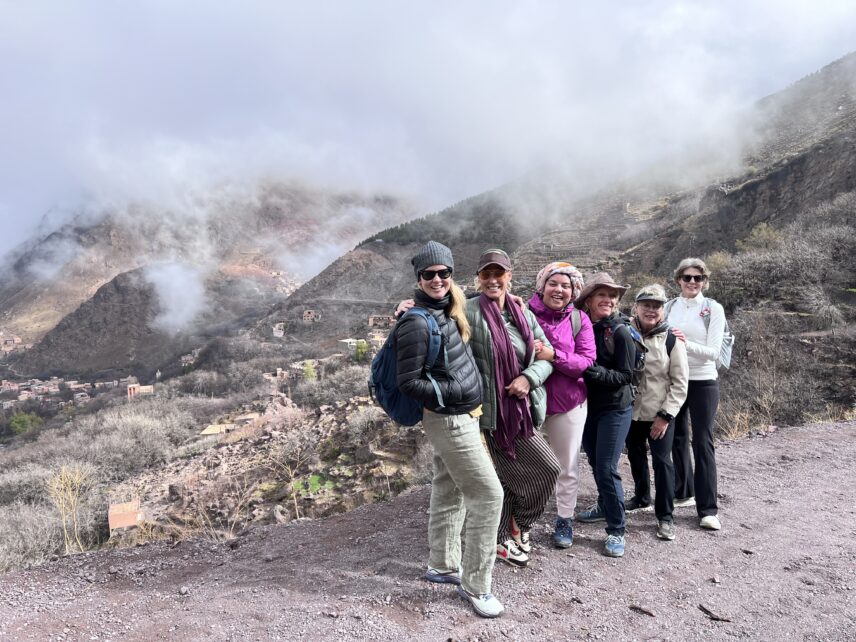
The mountains hold their own charm, and here we find tourists from all over the world, hoping to climb the highest peak in North Africa, Jebal Toubkal. We’re not here to bag any peaks, but to take in the mountain vibe and hike as much (or as little) as we want. We can feel the temperature drop and are grateful for the heaters in our rooms and the wood stove in the common area, though the daytime temperatures are still quite pleasant, getting into the 70’s (20C). Each room comes with a djellaba (or two), a full length wool or fleece garment with a pointed hood that can be worn as an overcoat in cool weather, and is great for keeping off the morning chill.
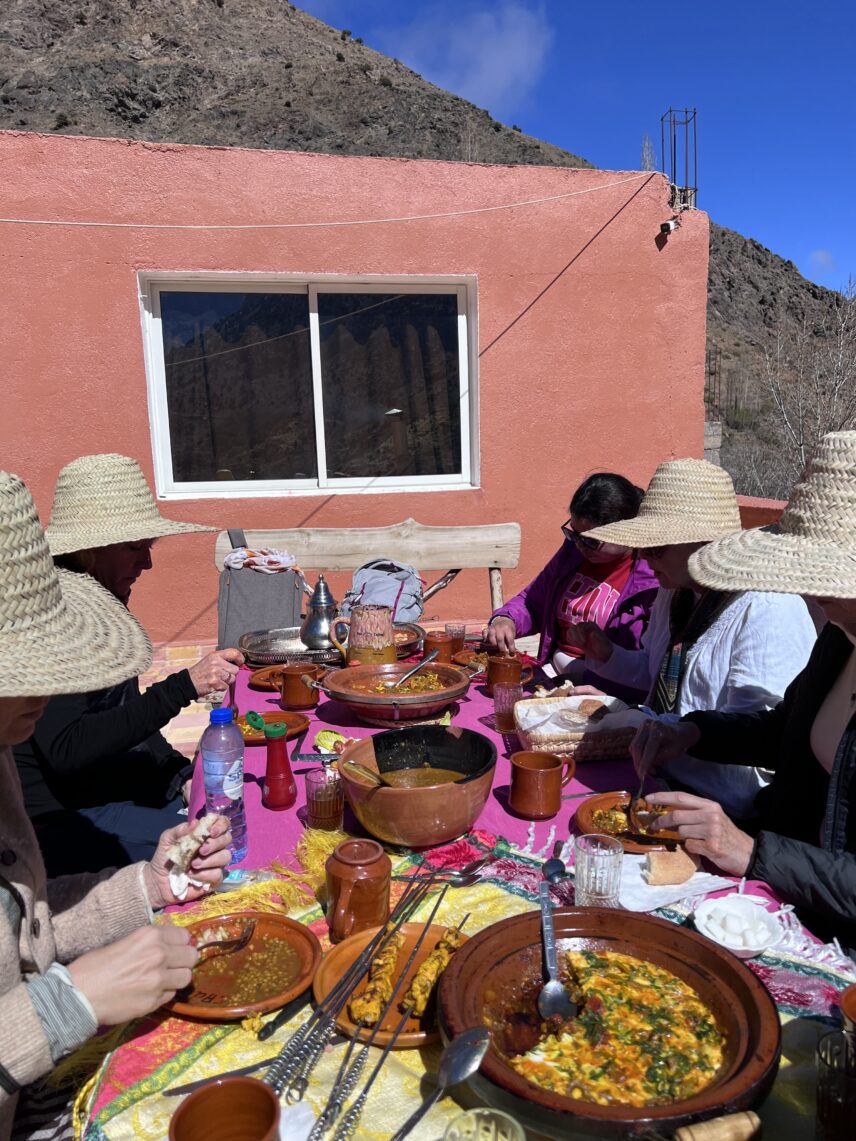
Here, in Imlil, we spend two nights and in between have an easy hike to the village of Aroumd, about an hour’s walk uphill. As we reach the village, we run into another Wild Women group who are on the 15-day Ultimate Morocco trip, and we gather together for high fives and a picture, three fingers of each hand held up in the WW (Wild Women) symbol, before we head off to separate restaurants for lunch. Our group meal is on a rooftop, with the mid-day sun warming our faces, and the snow-capped mountains towering overhead. We have the option to climb higher on a rocky single track trail to a small shrine, but we decide to have a more laid back day, exploring a little further up the valley before turning back and meandering through the village of Aroumd on our way back to the hotel for a relaxing afternoon.
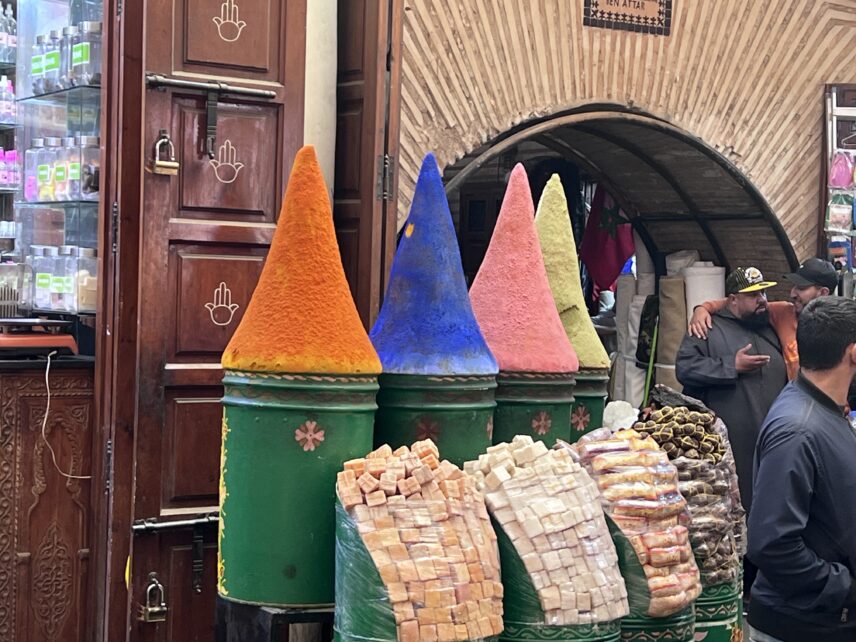
Soon, it’s time to return to the bustle of Marrakech, where we have a final day to wander the market and pick out a few last souvenirs from the many vendors who are keen to sell: spices, caftans, hands of Fatima to ward off the evil eye, trinkets and boxes, lanterns and tassles.
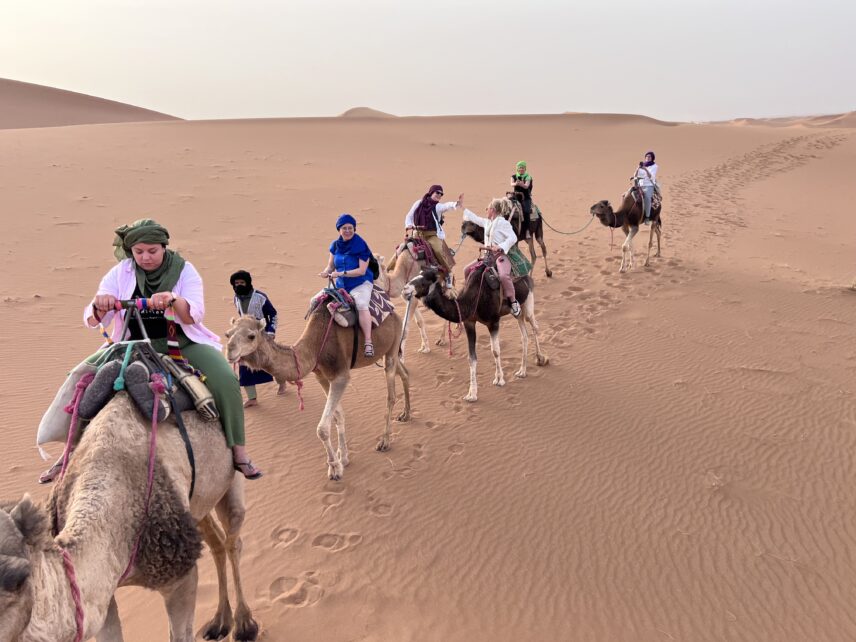
Our last dinner together, at Nomad, a funky fusion restaurant in the heart of the Medina, is full of laughs and promises to stay in touch. We have formed a bond in our small group of seven (with our guide, Miriam), and we have been blessed with the opportunity to peek inside the lives of women and families as we’ve been warmly welcomed. We’ve taken in all of the sensory wonders that Morocco has to offer. Our hugs goodbye are long and heartfelt, and while our henna has now faded, the memories of our time together in Morocco will stay with us forever. Shine Bright Like a Diamond, indeed!
